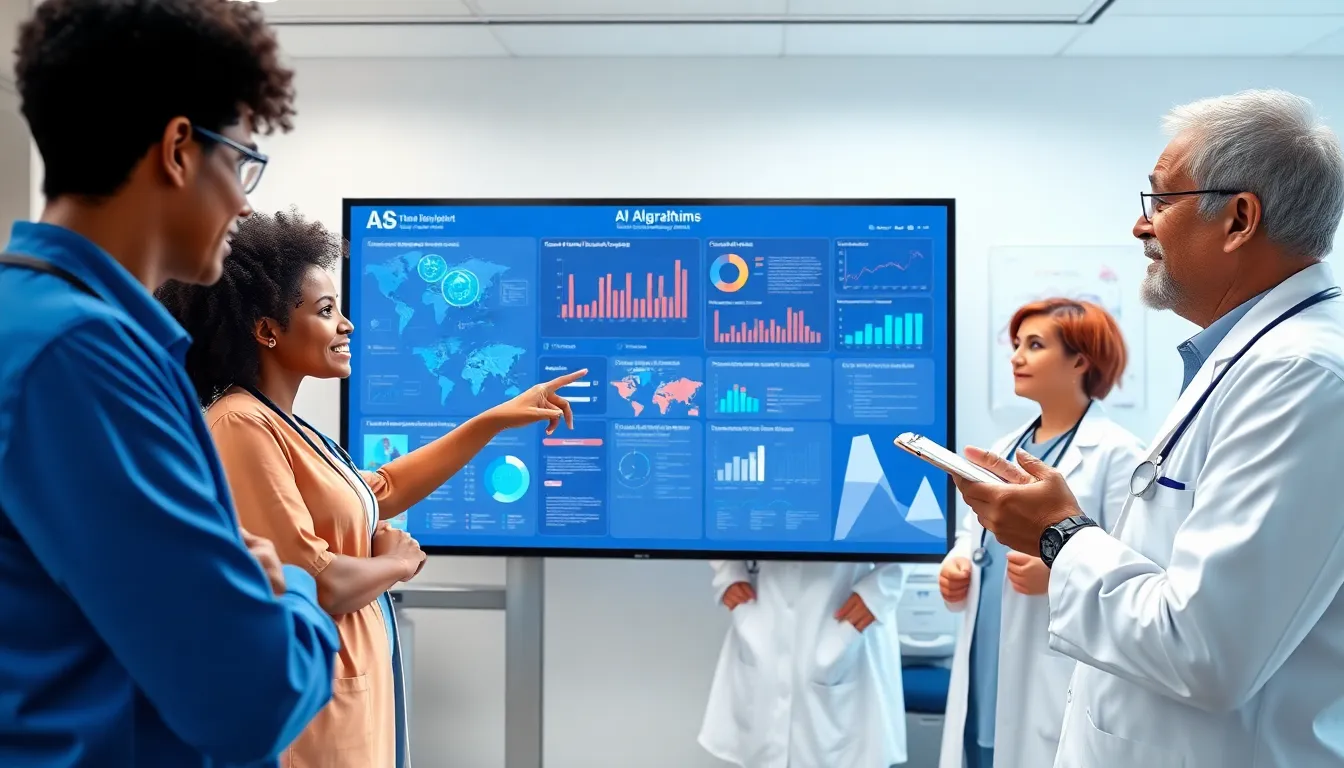In a world where your fridge can remind you to buy milk, it’s no surprise that healthcare is getting a tech makeover too. Enter the Internet of Things (IoT), the superhero of modern medicine, swooping in to save the day with connected devices that monitor everything from heartbeats to medication schedules. Imagine a hospital where doctors can diagnose patients faster than you can say “Wi-Fi”—that’s the magic of IoT in healthcare.
Table of Contents
ToggleOverview of IoT in Healthcare
The Internet of Things (IoT) significantly enhances healthcare through interconnected devices designed for patient monitoring and data analysis. Healthcare providers utilize smart devices to track vital signs, ensuring timely responses to patient needs. Wearable technology, such as fitness trackers and smartwatches, collect real-time health data, facilitating proactive healthcare measures.
Data analytics plays a crucial role in interpreting information gathered from these devices. With the ability to process extensive datasets, healthcare professionals can discover patterns that lead to improved treatment plans. Hospitals increasingly adopt IoT solutions to optimize operations, streamline workflows, and alleviate administrative burdens.
Telemedicine benefits from IoT innovations, allowing remote consultations and continuous patient engagement. Patients equipped with IoT-enabled devices report their health metrics, reducing the necessity for frequent office visits. This approach also fosters a collaborative atmosphere between patients and healthcare providers, enhancing treatment adherence.
Security remains a primary concern in IoT deployment within healthcare. Protecting sensitive patient information against cyber threats requires robust security measures and industry compliance. Regulatory bodies emphasize the importance of maintaining data privacy as more devices enter the healthcare ecosystem.
Examples of IoT applications in healthcare include remote patient monitoring systems and smart medication dispensers. These systems improve patient outcomes through consistent monitoring and reminders, promoting medication adherence. As technology evolves, the integration of IoT in healthcare offers promising solutions to existing challenges, paving the way for innovative healthcare delivery models.
Benefits of IoT in Healthcare

The integration of IoT in healthcare delivers numerous advantages, particularly in patient monitoring and data collection.
Improved Patient Monitoring
Smart devices enhance patient monitoring by providing real-time tracking of vital signs. Innovations like wearable health technology enable individuals to manage chronic conditions more effectively. Alerts generated by these devices notify healthcare providers immediately about any concerning changes. This proactive approach reduces hospital visits and emergency situations, allowing for timely interventions. Remote monitoring reduces strain on healthcare facilities while ensuring personalized care. IoT applications in this area boost patient engagement, encouraging individuals to take an active role in their health management.
Enhanced Data Collection
Data collection improves significantly with IoT devices that gather extensive health-related information. Tools such as fitness trackers and remote patient monitoring systems compile data consistently and accurately. Healthcare professionals analyze this information to recognize trends and tailor treatment plans for individual needs. This analysis fosters better decision-making and enhances patient outcomes. As a result, healthcare providers can monitor medication adherence through smart dispensers that track usage patterns. The reliability of data collection from IoT devices advances research capabilities, promoting broader healthcare improvements.
Challenges of IoT in Healthcare
Implementing IoT in healthcare presents several significant challenges that require attention. Addressing these challenges ensures that innovations benefit patients effectively and securely.
Security Concerns
Security remains a top challenge for IoT in healthcare. Protecting sensitive patient data from cyber threats involves implementing strong encryption and security protocols. Hackers increasingly target healthcare systems, compromising patient information. Compliance with regulations, such as HIPAA, adds complexity to this issue, requiring constant updates and safeguarding measures. Organizations must prioritize staff training on cybersecurity practices to mitigate risks. Regular audits can further enhance security by identifying vulnerabilities in connected devices. Overall, the critical need for robust security measures cannot be overstated, as breaches can severely impact patient privacy and trust.
Interoperability Issues
Interoperability poses a significant barrier when integrating IoT devices in healthcare systems. Many devices operate on different platforms and standards, complicating data exchange. Healthcare providers face difficulties in consolidating information from various sources, limiting the seamless flow of patient data. Incompatible devices hinder effective communication among healthcare professionals. Standardizing protocols can enhance interoperability and streamline workflows. Adopting widely accepted standards, such as HL7 or FHIR, fosters better integration among devices. Efforts to improve interoperability ultimately facilitate better patient care and enhance decision-making through comprehensive data access.
Future Trends in IoT for Healthcare
The Internet of Things continues to evolve, creating dynamic opportunities within healthcare. Emerging technologies promise to further enhance patient care through innovative solutions.
Wearable Devices
Wearable devices play a pivotal role in the IoT landscape, capturing real-time health data. These gadgets, such as smartwatches and fitness trackers, monitor vital signs like heart rate and oxygen levels. By collecting continuous data, these devices empower patients to manage chronic conditions effectively. Insights gained from wearables help healthcare providers tailor treatment plans based on individual needs. Additionally, features like activity tracking and sleep monitoring encourage healthier lifestyles, contributing to overall wellness. The integration of advanced IoT technology in wearables ensures compatibility with various health applications, enhancing their functionality.
Telemedicine Advancements
Telemedicine experiences significant growth due to IoT innovations, changing the healthcare delivery model. Remote consultations enable patients to access medical care without hospital visits, promoting convenience and efficiency. Through video calls and real-time data sharing, healthcare professionals maintain continuous engagement with their patients. IoT devices facilitate this interaction by transmitting health data directly to providers, enabling timely responses to changes in patient conditions. Moreover, telemedicine reduces costs associated with in-person visits, making healthcare more accessible. As technology advances, telemedicine holds the potential to expand services and improve healthcare outcomes significantly.
The integration of IoT in healthcare is reshaping the landscape of patient care and medical practices. With real-time monitoring and data analytics, healthcare providers can respond swiftly to patient needs and enhance treatment plans. Wearable devices and telemedicine are empowering patients to take charge of their health while reducing the burden on healthcare facilities.
Despite the numerous benefits, addressing security and interoperability challenges remains essential. Ensuring patient data protection and seamless communication among devices will be critical for maximizing the potential of IoT in healthcare. As technology continues to evolve, the future holds great promise for improved patient outcomes and innovative healthcare solutions.





